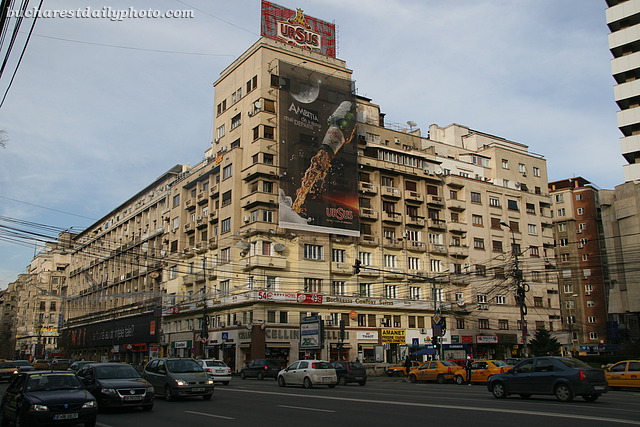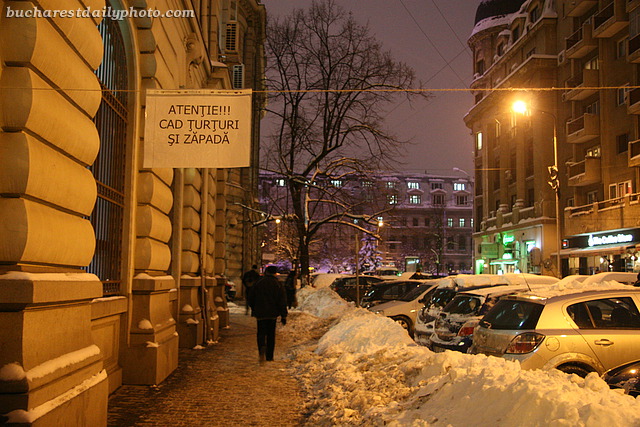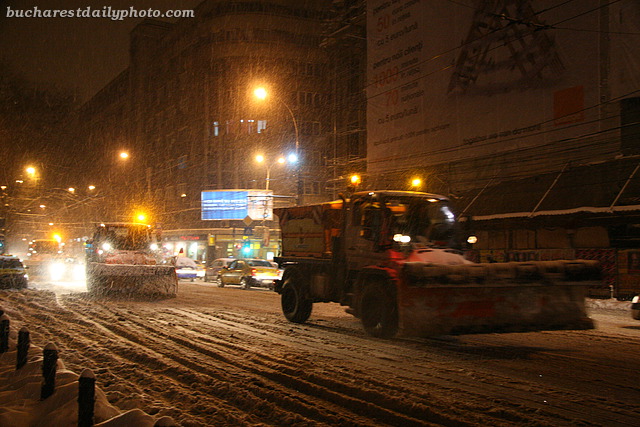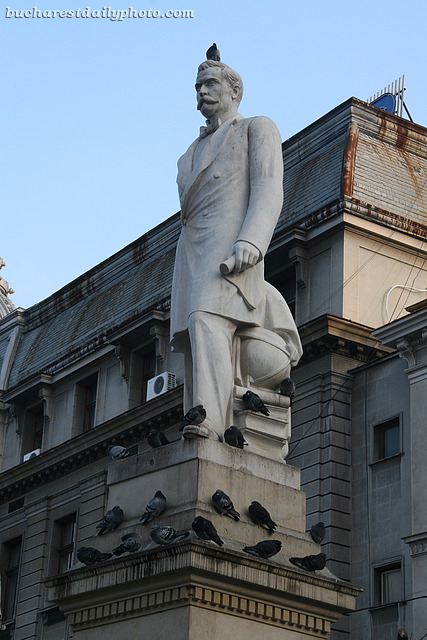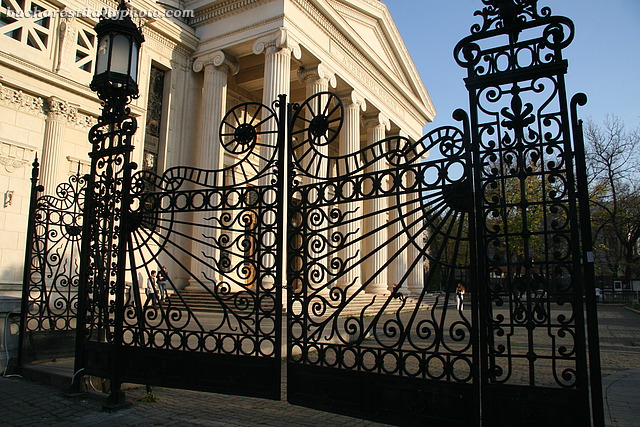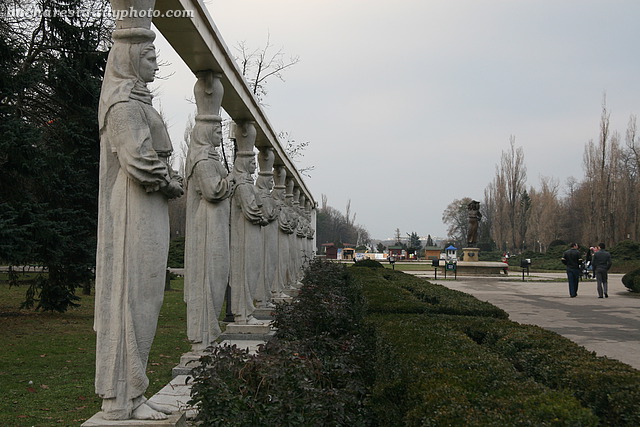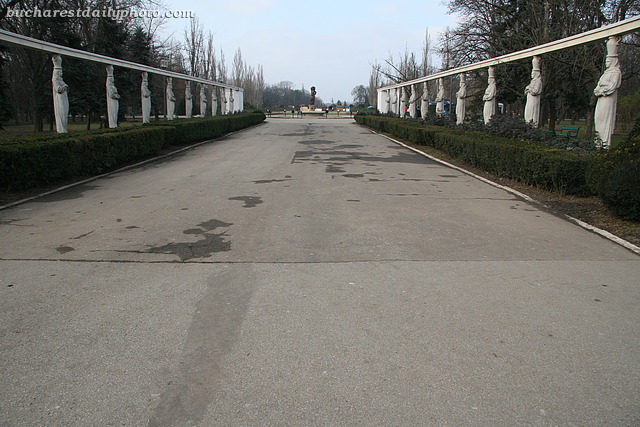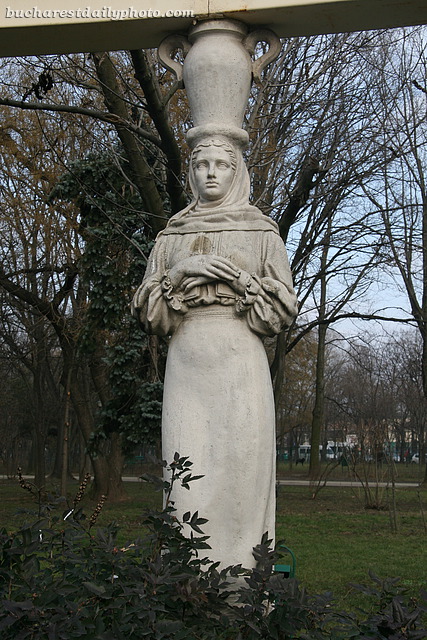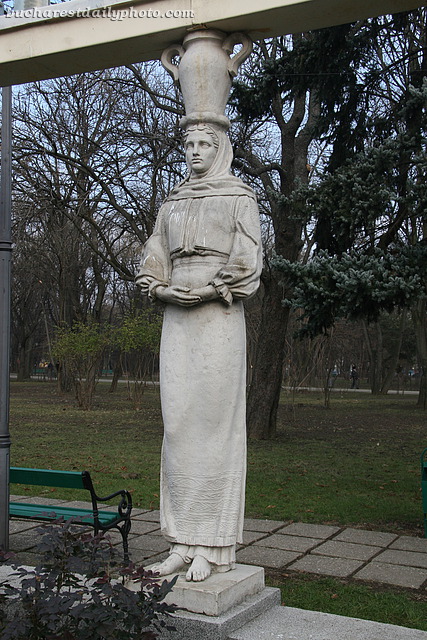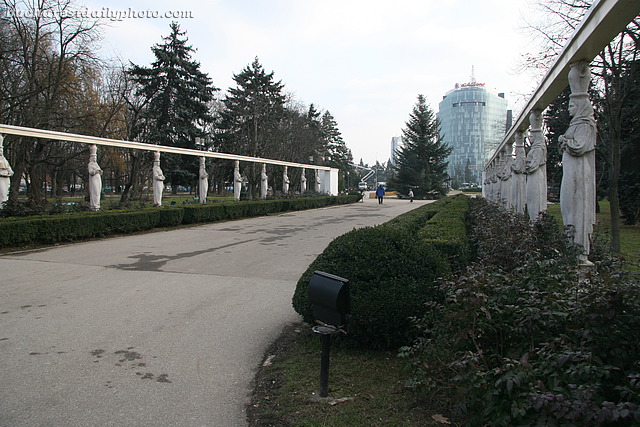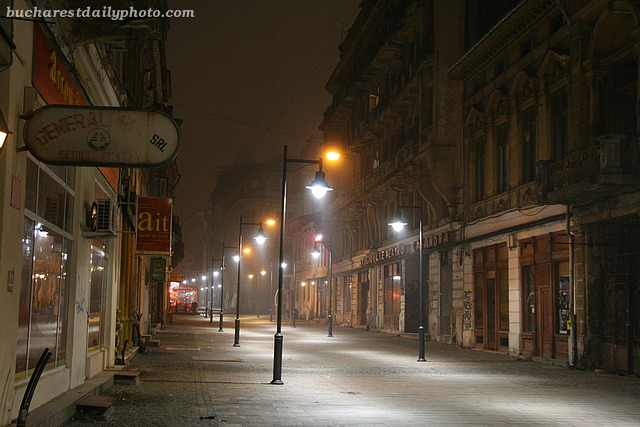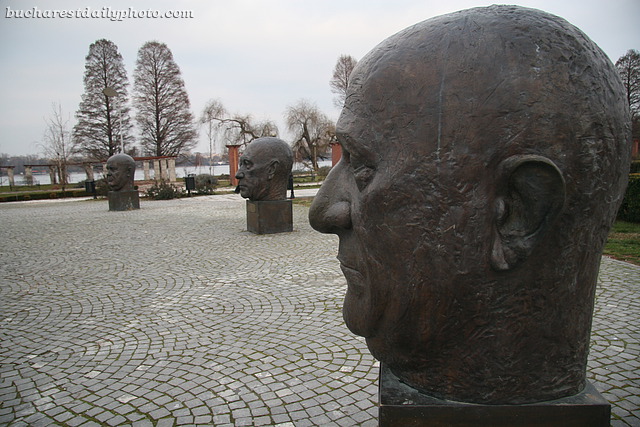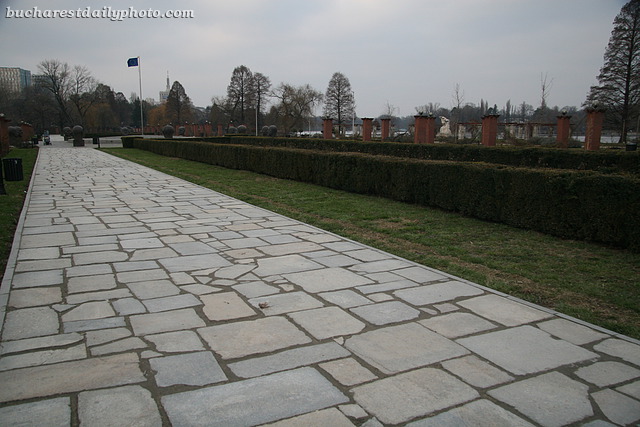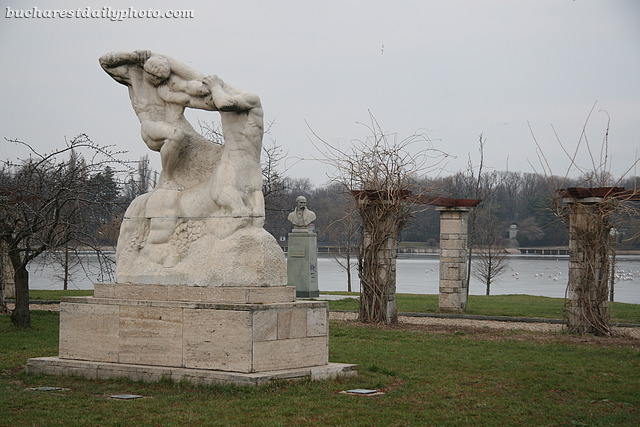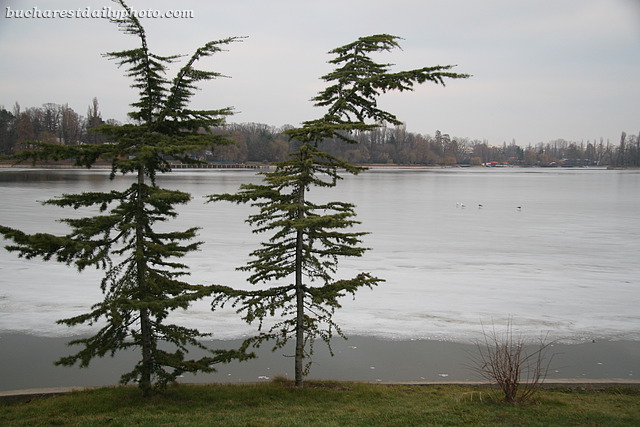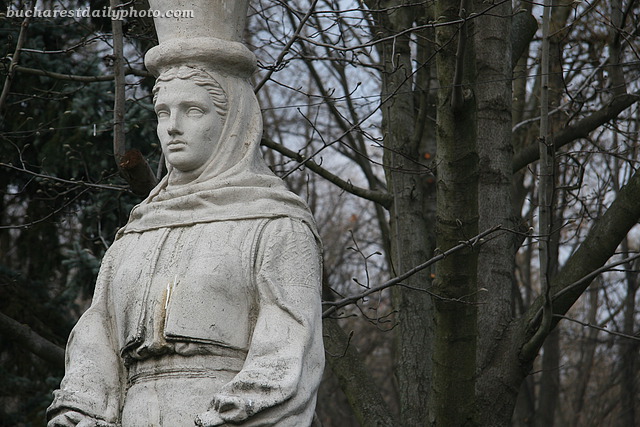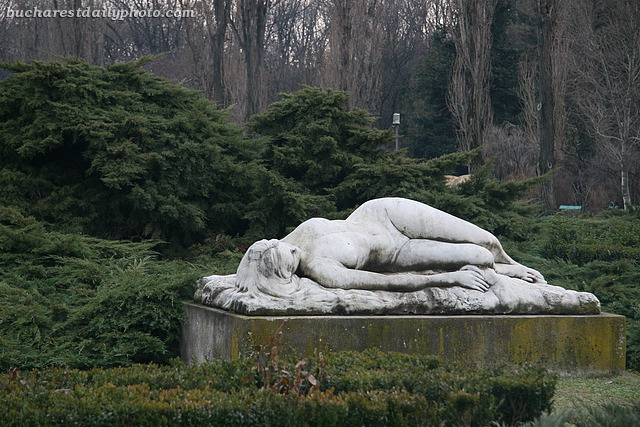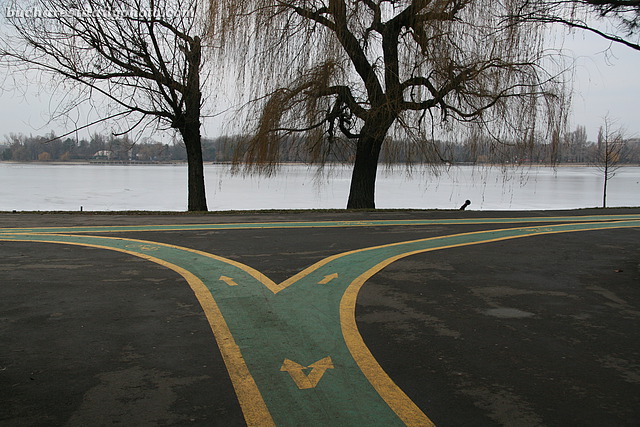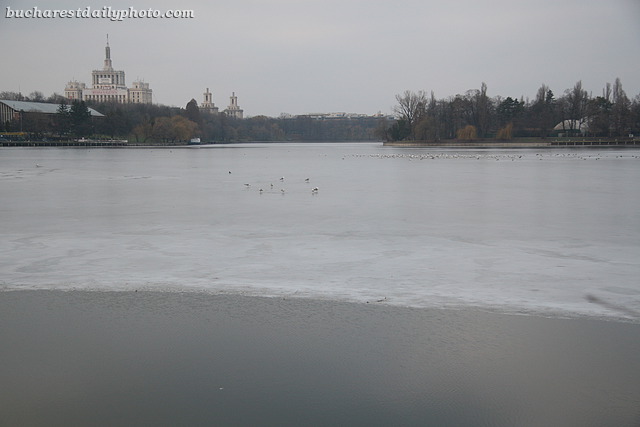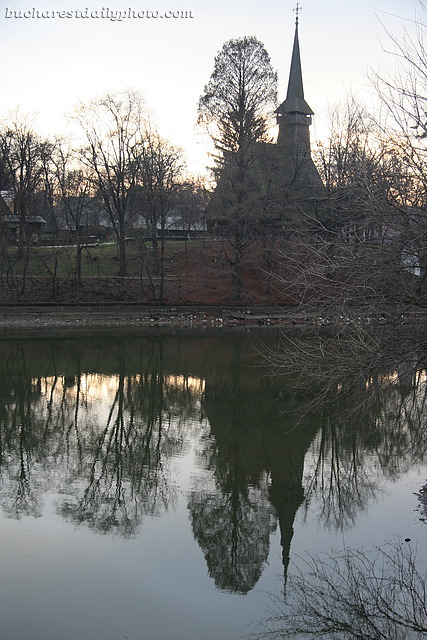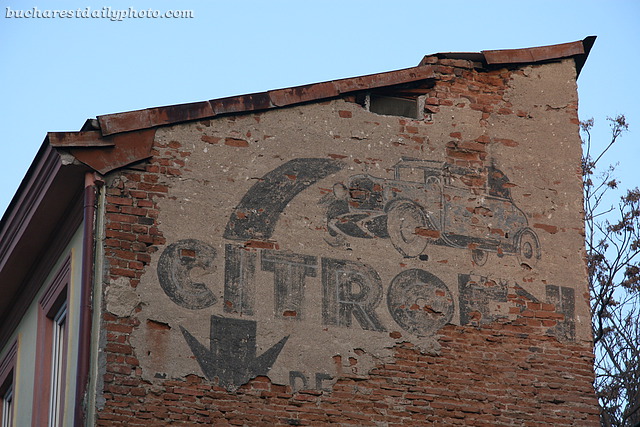I confess to be a fan of between the war architecture. I think you guessed that already, since this series has reached part 6. Modernist, Bauhaus, Art Deco, I like all the flavors and shapes. Maybe that’s why I like strolling on Boulevards Bălcescu and Magheru, despite the fact that they get the most traffic in Bucharest. Many of the buildings that line these boulevards were built in the 20s and 30s and from my point of view they are an architectural feast. I’ve already showed you one example of a Magheru building back in December and today’s photograph shows another one, “Creditul Minier” apartment building (Blocul Creditul Minier in Romanian), located on the corner of Bălcescu Bouvelard and Batiştei Street. It was built in 1937 by architect State Baloşin. I like its higher corner element and the way it is integrated in the structure. I also like its Art Deco balconies. For almost half a year I’ve tried to capture this building without a banner, but that proved to be mission impossible.
You’ve been warned 🙂 Here comes another snow photo. One that comes with a warning 🙂 The hanging piece of paper reads “Beware!!! Snow and icicles falling”. As you can see my fellow citizens don’t seem to be taking the sign too seriously.
I hope my dear visitors that you’re not already bored by my snow photos. This winter is proving to be one with a lot of snow so there are even more snow photos coming your way. Of couse I could post photos from my personal archive, taken last summer or last fall but it feels a bit weird to be showing clear blue skies and sunny weather when the city is all dressed in white. Besides, I like the city covered in snow. It’s been snowing since yesterday, calmly at first, more heavily today. Everybody’s been complaining about the state of the roads but I have to say that I’ve seen quite a few snow plows on the streets of Bucharest. Two of them are the stars of today’s photo.
Out of the four statues in the University Square, the one in today’s photograph is the one that seems to agree by far with the square’s pigeons. In fact, the last few times I passed through the square there were no pigeons on any of the other three statues. The statue is that of Spiru Haret (February 15, 1851 – December 17 1912), mathematician, astronomer, professor and politician, who served as the Minister of Education three terms and brought reforms that helped build the Romanian education system. The statue is by Ion Jalea and was placed in the square in 1935.
These are the iron wrough gates of the Athenaeum park. I just thought they look nice.
Because one of the photos from the “Winter in the park” series has raised some questions I decided to show the entire work of art that contains that statue, work that was clipped by my framing. The ensemble is called “The Alley of the Cariatides” by Constatin Baraschi (November 17, 1902 – March 22, 1966) and consists of two strings of 10 statues on each side of the alley. The statues represent Romanian peasant women, dressed in traditional clothing and carrying an amphora on their heads. There are two types of statues and they are differentiated by the position of their hands. The work was unveiled in 1936 but what we see today is not the original, which was destroyed during communism to make space for a statue of Stalin, but a reconstruction done in 2005 using the original molds. I don’t know how correct this information is but I’ve also read on the web that “The Alley of the Cariatides” caused quite a stir when it was originally unveiled, stir determined by two facts: first, that this was a classical arrangement but the subjects were peasants and second, the fact that the peasants were barefoot.
Today is Theme Day at the City Daily Photo, a community of bloggers who like photographing their cities. Today’s theme is: Best photo of the year 2009. Click here to view thumbnails for all participants
I couldn’t decide which photo from last year I like best so I picked the one that proved to be the most popular, meaning the one who got the most comments. It represents Bucharest’s Old Town (Historic Quarter) on a late November night. With the summer terraces gone, the streets in the Old Center look deserted, even though many of the cafes lining the streets are full until late at night. The photo shows Franceză Street on a Thursday around midnight.
One of the attractions in Herăstrău park is the small “Island of roses” which can be reached via two arched bridges. There, among flowerbeds and walking alleys you can find the “Monument of the Founding Fathers of the European Union”, a collection of 12 sculpted heads arranged in a circle, each statue about 1.2 meters tall, and showing like its name says, the famous people involved in the founding of the EU. Their author is the artist Ionel Stoicescu and the monument was unveiled on Europe Day, May 9, 2006 when Romania was still a candidate to join the EU. More photos from the island following:
The park featured in today’s photos is Herăstrău Park, the largest of Bucharest’s parks, which is located in the northern part of Bucharest. The park encloses the shores of the Herăstrău Lake which is one of the dozen lakes stretching along the northern border of Bucharest. Before 1930 this area was an unhealthy swamp, which was drained between 1930 and 1935 and the park, modeled by the landscape architects Pinard and Rebhuhn, was opened in 1936. In the summer the park is a popular place for hanging out, its shaded alleys being a good place to take refuge from the heat. It is also popular with walkers, joggers and cyclists. The Village Museum, previously featured on the blog is located in the park. There are also plenty of small cafes, restaurants and fast food vendors, also children’s playgrounds and a boat rental booth.
In the winter the park is quiet and its dormant feel makes it look like it’s hibernating. The statue above is part of a structure which can be found at the Charles de Gaulle Square entrance.
Lying girl statue
Looks like we have at least two choices in life 🙂
During one of my walks around the city I was exploring the quarter behind Cocor store, when I happened to spot this Citroen ad up high on a building wall. It looked like an old ad, maybe one from between the wars but I couldn’t hope that something like this escaped without being destroyed during the communist years. Once home I searched the web, reading forums and found out that the add is probably from the 70s when it was painted for a movie that was shot at that location. Looks nice, nonetheless.
